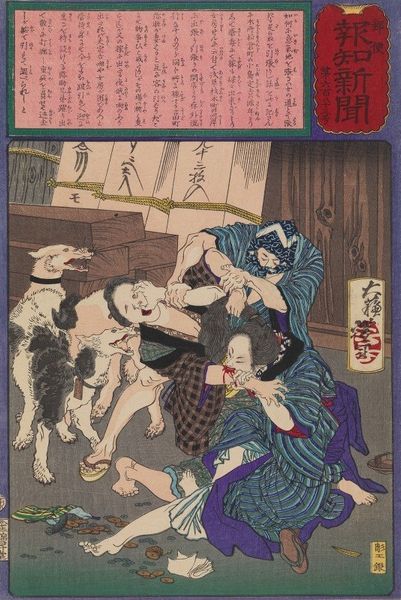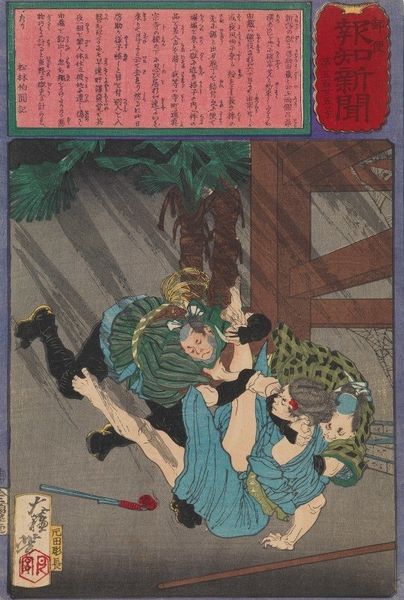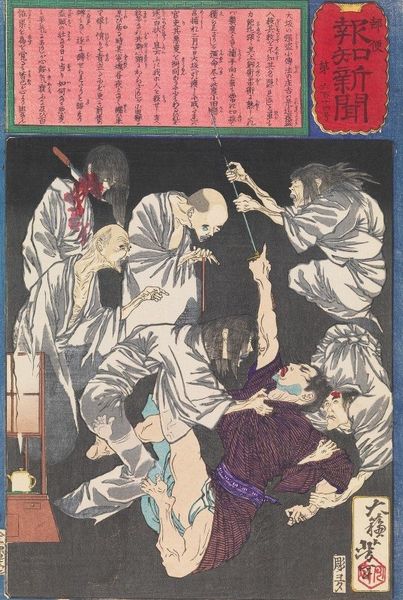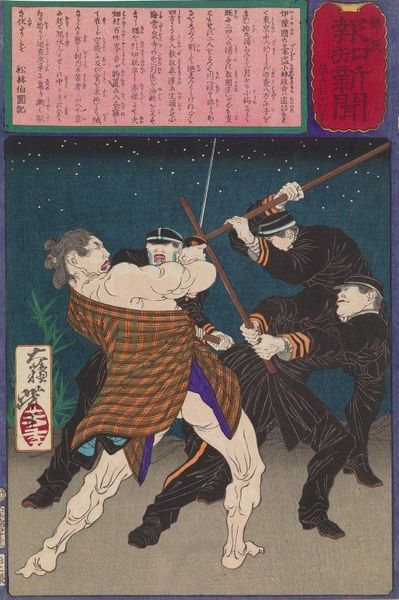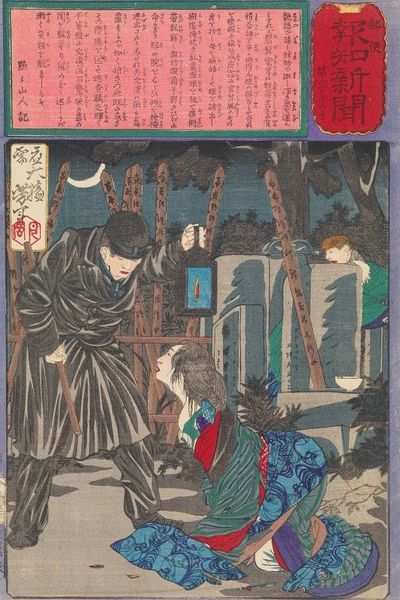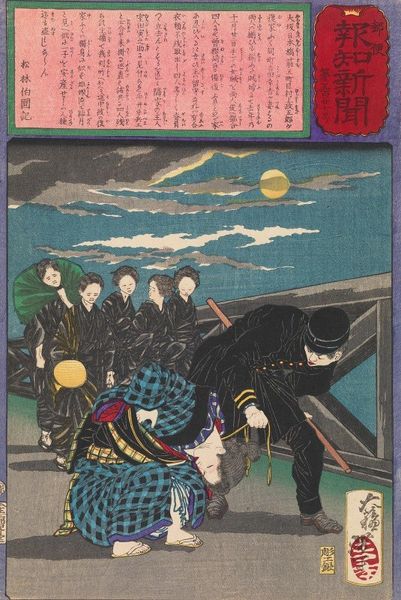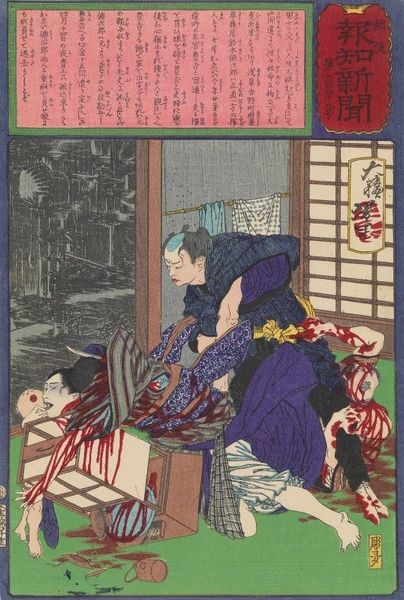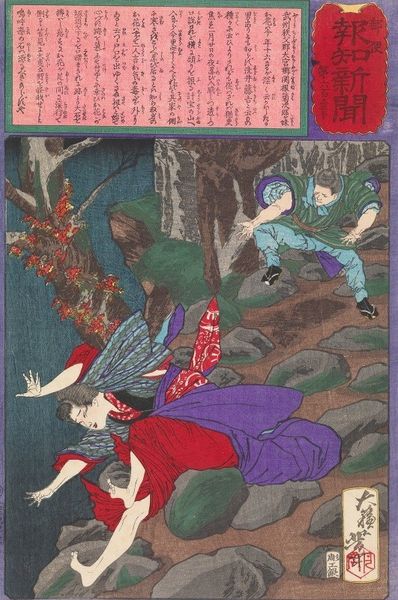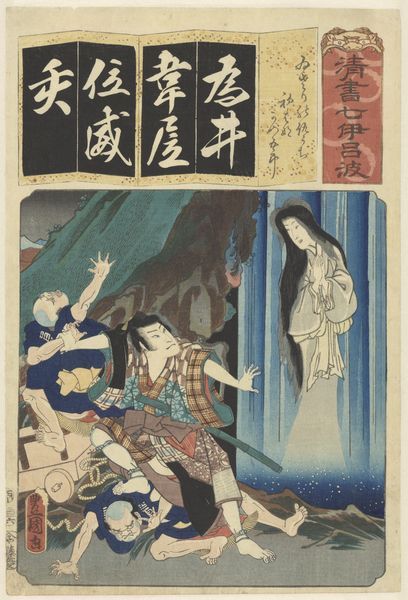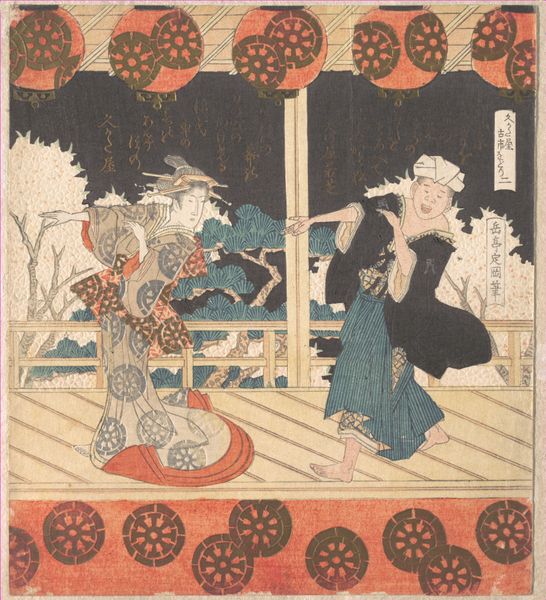
Guden Toku Revives after His Funeral and Terrifies a Group of Gamblers 1875
0:00
0:00
Copyright: Public Domain: Artvee
Curator: My word, what a commotion. It feels like a stage scene caught in the midst of some wild, dark theatre. Editor: Precisely the sort of drama captured by Yoshitoshi in his woodblock print, created around 1875, titled "Guden Toku Revives after His Funeral and Terrifies a Group of Gamblers." Ukiyo-e really had a knack for these fantastical tales, didn’t it? Curator: A funeral, you say? And look at these chaps strewn all over the place. The freshly resurrected man has certainly made quite an entrance. Is it just me, or is there a wicked gleam in his eye? Editor: Indeed. Yoshitoshi was operating in a Japan grappling with massive shifts in social and economic order. Gambling was rife, particularly among the poorer classes. The print serves as a moralistic warning, almost – divine retribution for wasteful and illicit behavior. Curator: That certainly throws a different light on it, but is that a pair of disembodied legs, right over there? The level of visual story-telling in one sheet of ukiyo-e never fails to astound me. You get hints of theater, the fantastical, but also of very earthly human pursuits. Editor: This image also pushes against idealized notions of masculinity prevalent at the time. It questions who really wields power – the supposedly strong gamblers, or a man literally risen from the dead, highlighting social anxieties. It certainly aligns with how art has continued challenging status quo and speaking for those silenced or oppressed. Curator: I love that. What better metaphor for subversion than literal reanimation, and using it to kick over the tables of the status quo? The palette as well – a dark underbelly erupting into raw color. It hints that even death can't stop you speaking truth to power, that no force can fully eradicate those in defiance. Editor: And that enduring spirit is perhaps why, centuries on, we're still analyzing Yoshitoshi's commentary, linking it with modern discussions about the corruptive influence of unfettered capital. It's also what makes such artworks continuously vital in fueling critical discussion of ethical issues across the human sphere.
Comments
No comments
Be the first to comment and join the conversation on the ultimate creative platform.
